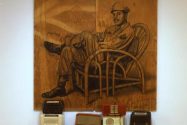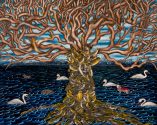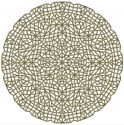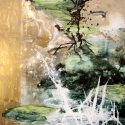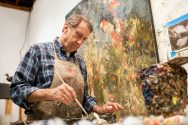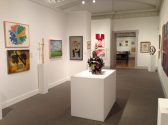“Carnival Craft,” NOLA Defender
Bruce Davenport’s meticulously plotted Bruce Jr. Does the Parades involves ten gloriously large diagrams of revelers and marching bands from an aerial perspective, and seven specifically hung 11×14 details of Mardi Gras. Each framed paper piece is a crisp 60×40 and they are hung in regimented order, like their subjects are arranged in marching band formation. Davenport worked in marker and pen, but the resulting work feels like a reliquary document instead of a teenage notebook. Davenport takes the viewer through the stories of black New Orleanians by narrating the scenes in ballpoint pen.




